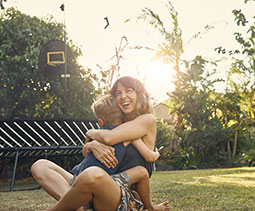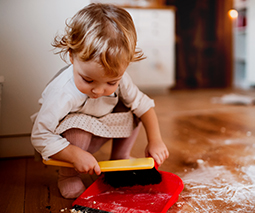Toilet training vs toilet timing: What’s the difference?

There are a lot of fallacies surrounding small children’s pee and poop, and mothercraft nurse Chris Minogue has got to the bottom (sorry) of quite a few in her time as one of our resident Parent School and Helpline experts.
Spot the difference
Clarifying the difference between toilet training and toilet timing, Chris says mixed messages abound.
“In certain cultures, they hold a little baby over a potty and they call that toilet training,” she explains, but in western cultures, the term toilet training is a more autonomous concept.
While toilet timing is often practised from the very early months of a baby’s life, toilet training occurs later as a child gets to know their own body and begins to identify the urge to poo or pee.
Parents might start toilet training between 18 months to two and a half years of age (sometimes later). Some parents start toilet timing – that is holding their baby over a potty or toilet – from birth. At this young age, this practice is also known as ‘elimination communication’.
The building blocks of toilet training
Chris says there’s a place for toilet timing – and it’s before parents begin toilet training.
“Toilet timing is what I do before I toilet train,” Chris explains. “Because if you think about little people, if you just go ‘today you’re wearing nappies and tomorrow you’re wearing underpants’, that’s a big call. Not only that – they suddenly need to sit on a toilet to do a wee!”
It’s a lot to take in all at once for a little person.
“Next, I move to toilet training. So now we’re asking the child to tell us. So we’re able to say ‘you’ve got your underwear on, there’s the toilet – or the potty – and you just tell Mummy if you need some help to go to the toilet.’”

Getting a child to wee over a toilet or into a potty is very different from teaching a child to take themselves off to the toilet at the appropriate time.
“To be toilet trained you have to have the cognitive development to stop what you’re doing and realise your body needs go to the bathroom, and take yourself there,” she explains, noting that babies and young toddlers are not developmentally ready for toilet training.
“They don’t have the understanding,” Chris says. “They don’t have it in language and they don’t have it in cognitive behaviour.”
All in good time
If parents are faced with competitive toddler toilet chatter, she suggests things may not always be as they seem.
“If somebody says to me ,’My 18-month-old is toilet trained’, I always ask, ‘Do they take themselves to the toilet?’ and they say, ‘Oh no, I take them’.”
“That’s toilet timing,” Chris stressed. For a child to be toilet trained, they need to able to recognise the urge to use the bathroom and hang on for the time it takes to find a bathroom and wrangle their clothing, then go to the bathroom.
For instance, Chris says, “You need to be able to be driving and the child says, ‘I need to go to the toilet’ and you say, ‘We’ll be home in two minutes’ and they can hold.”
Chris says most children will be closer to two years of age or often quite a bit older when toilet training really begins to fall into place.
So if your child appears to be taking a bit longer than you expected, try not to stress. Stay calm, and watch for those signs that let you know your child is starting to understand when their body gives them the signal to go to the toilet. Time and patience are key!
 Need some more toilet training advice? Our Parent School Toilet Training Support program can help. Click to find out more or book a one-on-one session with a toilet training expert.
Need some more toilet training advice? Our Parent School Toilet Training Support program can help. Click to find out more or book a one-on-one session with a toilet training expert.









